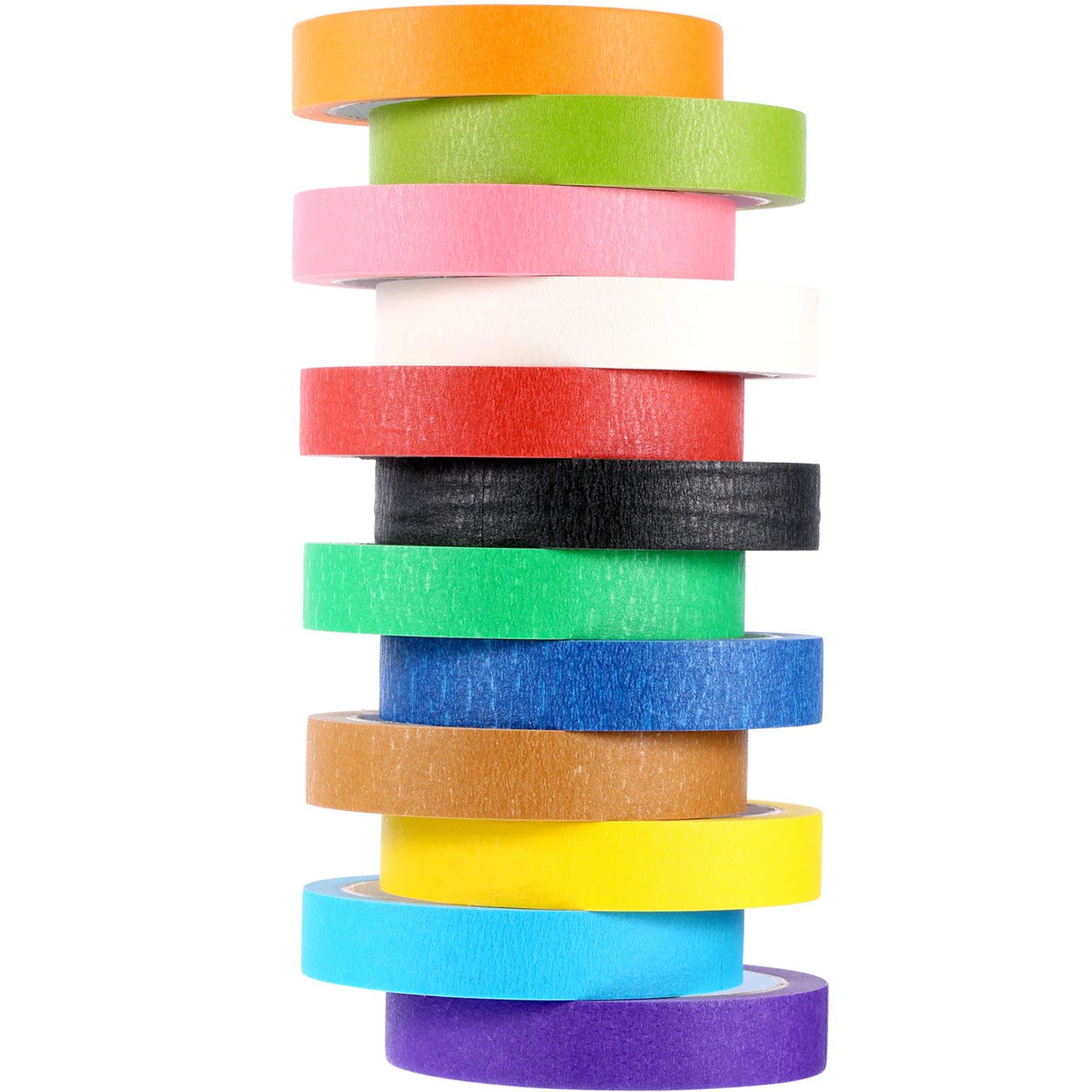Water Color Paint Mask Off Area
Yichang Adhesive New Material Co.,Ltd. 2023-11-110 views
Understanding the Basics of Masking in Watercolor Painting
Masking in watercolor painting is an essential technique that allows artists to create clean and precise areas of untouched paper within their artwork. By using a masking fluid, artists can protect specific areas from being painted over, preserving the white of the paper and ensuring sharp edges. This technique is particularly useful when working with intricate details or when wanting to achieve a layered effect.
To employ masking in watercolor painting, the artist will need a few basic materials and tools. Firstly, a good quality masking fluid is vital. This is a liquid rubber compound that can be applied to the paper and easily peeled off once the paint has dried. Additionally, an assortment of brushes, both synthetic and natural hair, is necessary for applying the masking fluid with precision. A palette for mixing the fluid and a palette knife or old brush for application are also recommended. Lastly, high-quality watercolor paper is crucial for achieving the desired effects and ensuring that the masking fluid does not damage the surface.
Materials and Tools Needed for Masking in Watercolor Painting
Watercolor painting is a delicate art form that requires precision and control. When it comes to masking off areas in your artwork, having the right materials and tools is essential. One of the most commonly used tools for masking in watercolor painting is painter tape. Painter tape, such as YITAP Painter tape, is a versatile tool that can be used to create clean and precise masked areas in your artwork. It is easy to apply and remove, making it a popular choice among artists.
In addition to painter tape, you will also need masking fluid. Masking fluid is a liquid compound that is applied to the surface of your paper to protect specific areas from paint. It creates a barrier that prevents the paint from seeping into the masked areas. When choosing masking fluid, it is important to select a high-quality brand that is easy to work with and does not damage your paper when removed. YITAP Masking Fluid is a reliable option that provides excellent coverage and is easily removable, ensuring that your masked areas remain clean and crisp.
Having the right materials and tools can make a world of difference in your watercolor painting journey. Painter tape, like YITAP Painter tape, and masking fluid are essential for creating clean and precise masked areas in your artwork. By investing in high-quality materials, you can ensure that your masking process is smooth and successful, allowing you to explore the endless possibilities of watercolor painting.
Step-by-Step Guide: Preparing Your Surface for Masking
To achieve clean and precise masked areas in your watercolor paintings, it is crucial to properly prepare your surface before applying masking fluid. Here is a step-by-step guide to help you get started.
First, gather all the materials and tools you will need for this process. Along with your watercolor paper, brushes, and masking fluid, you will also require a palette for mixing your paint, a container of water for rinsing your brushes, and some paper towels for blotting excess water.
Begin by securing your watercolor paper onto a flat surface using painter's tape. This tape acts as a barrier, preventing the paper from buckling or warping when it comes into contact with water and paint. Make sure to align the edges of the tape with the sides of your paper, creating a clean and straight border. Painter's tape, like YITAP Painter tape, is ideal for this purpose as it provides a strong and adhesive hold, leaving no residue behind when removed.
• Gather all the materials and tools needed for the process: watercolor paper, brushes, masking fluid, palette, container of water, and paper towels
• Secure the watercolor paper onto a flat surface using painter's tape
• Align the edges of the tape with the sides of your paper to create a clean border
Techniques for Applying Masking Fluid in Watercolor Painting
When it comes to applying masking fluid in watercolor painting, there are a few techniques that can help you achieve clean and precise results. One method is to use a fine-tipped brush that allows for controlled and precise application of the fluid. This is especially useful when you need to mask off intricate details or small areas in your artwork. Another technique is to use a palette knife or a rubber-tipped tool to apply the masking fluid. This allows for broader strokes and can be helpful when you want to mask off larger areas or create textured effects in your painting.
Regardless of the technique you choose, it is important to apply the masking fluid evenly and smoothly onto the paper. Air bubbles or uneven application can result in leaks and unwanted paint seepage. Additionally, make sure to fully cover the areas you want to mask off, as any gaps or inconsistencies can also lead to paint bleeding through. Take your time and practice applying the masking fluid on a scrap piece of paper before working on your actual artwork. This will give you a better understanding of how the fluid behaves and help you achieve the desired effects in your watercolor painting. Ensure you are using a high-quality masking fluid, such as the YITAP Painter tape, which is known for its reliability and ease of use.
Tips and Tricks for Creating Clean and Precise Masked Areas in Your Artwork
Creating clean and precise masked areas in your artwork requires careful attention to detail and the use of appropriate techniques. One effective tip is to ensure that your masking fluid is applied evenly and smoothly onto the paper or canvas. This can be achieved by using a fine-tipped brush or a special masking fluid pen. Take your time and apply the fluid with gentle, controlled strokes, making sure to cover every area that you want to protect.
Another helpful trick is to plan your painting and decide in advance which areas you want to mask off. This will allow you to work more efficiently and avoid accidentally masking areas that you didn't intend to. Before applying the masking fluid, it is also advisable to lightly sketch or outline the areas that will be masked. This will help you visualize the composition and ensure that your masked areas align with your overall artistic vision. Additionally, consider using painter tape, such as YITAP Painter tape, in combination with masking fluid. Painter tape can provide clean edges and crisp lines, making it an invaluable tool for achieving precise masked areas in your watercolor paintings.
How to Remove Masking Fluid and Reveal the Unmasked Areas
When it comes to removing masking fluid in watercolor painting, it is important to proceed with caution to avoid any damage to the underlying paint layers. Once your artwork is dry and you are ready to reveal the unmasked areas, there are a few key steps to follow.
Firstly, gently rub your finger or an eraser over the dried masking fluid to loosen it from the paper. Be careful not to exert too much pressure, as this can cause the paper to tear. Once the masking fluid has been loosened, you can begin to lift it off the paper using a clean and dry brush or a piece of soft cloth. It is important to work slowly and patiently to ensure that you do not accidentally remove any paint along with the masking fluid.
For stubborn or hard-to-reach areas, you can also utilize specialized tools such as a rubber cement pick-up eraser or a mask removal fluid. These tools can help to further lift off the masking fluid without damaging the surrounding paint. Just remember to proceed with care and to always test any new materials or techniques on a small scrap piece of paper before applying them to your actual artwork.
Removing masking fluid can be a delicate process, but with the right tools and techniques, you can reveal the unmasked areas of your watercolor painting with precision and finesse. By following these steps and taking your time, you can ensure that your artwork remains intact and that the masked-off areas are revealed beautifully.
Exploring Different Masking Techniques to Achieve Various Effects in Watercolor Painting
When it comes to watercolor painting, exploring different masking techniques can open up a world of possibilities and allow you to achieve various effects in your artwork. One popular technique is using painter tape to create clean and straight lines in your paintings. Painter tape, also known as masking tape, is a versatile tool that can help you mask off areas and create sharp, defined edges. By carefully applying the tape to your watercolor paper before painting, you can create distinct sections that will remain untouched by the paint. This technique is especially helpful when working on architectural subjects or when you want to create bold, graphic elements in your artwork. Painter tape is easy to use and can be removed without leaving residue, making it a great addition to your watercolor toolkit.
Common Mistakes to Avoid When Masking in Watercolor Painting
When it comes to masking in watercolor painting, there are a few common mistakes that artists should avoid. One of the most prevalent errors is using the wrong type of masking tape. It is crucial to choose a tape specifically designed for use with watercolors to prevent any unwanted damage to the paper. YITAP Painter tape, for example, is a reliable option that can ensure a clean and precise masking off area.
Another mistake to avoid is applying too much pressure or leaving the masking tape on the paper for too long. Pressing too hard can create indents or damage the paper, while leaving the tape on for an extended period may result in difficulty removing it without tearing the paper. Artists should exercise caution and remove the masking tape within a reasonable timeframe, ensuring that it does not remain on the paper for days on end. Taking these precautions will help achieve better results and maintain the integrity of the artwork.
You may also like

 1529
1529 Customized Plastic HDPE Protein Powder Bottle sample display for customer's order

 1514
1514 The kiss fish is so sweet in the Maker's plastic bottle factory

 1498
1498 150ml PET travel package plastic bottle for shampoo and skin care cosmetics with screw cap

 1496
1496 Blowing PET Plastic Bottles for USA Customer's Order from Maker Cosmetic Packaging Material Co., Ltd

 1481
1481 Modern style PETG plastic shampoo bottle with lotion pump

 1437
1437 Hologram laser lamination film high gloss & normal gloss

 1429
1429 Plastic cosmetic spray shampoo bottle/lotion bottle/detergent bottle and juice water bottle products showroom of Maker Cosmetic

 1408
1408 Wholesale 300ml purple special round cosmetic PET plastic bottle for lotion

 1367
1367 Plastic HDPE and PETG Cosmetic Bottle Production Process of Maker Cosmetic Packaging Material Co., Ltd

 1359
1359 The annual meeting interesting game of Maker Cosmetic Packaging Material Co., Ltd.

Customized Plastic HDPE Protein Powder Bottle sample display for customer's order

The kiss fish is so sweet in the Maker's plastic bottle factory

150ml PET travel package plastic bottle for shampoo and skin care cosmetics with screw cap

Blowing PET Plastic Bottles for USA Customer's Order from Maker Cosmetic Packaging Material Co., Ltd

Modern style PETG plastic shampoo bottle with lotion pump

Hologram laser lamination film high gloss & normal gloss

Plastic cosmetic spray shampoo bottle/lotion bottle/detergent bottle and juice water bottle products showroom of Maker Cosmetic

Wholesale 300ml purple special round cosmetic PET plastic bottle for lotion

Plastic HDPE and PETG Cosmetic Bottle Production Process of Maker Cosmetic Packaging Material Co., Ltd

The annual meeting interesting game of Maker Cosmetic Packaging Material Co., Ltd.
